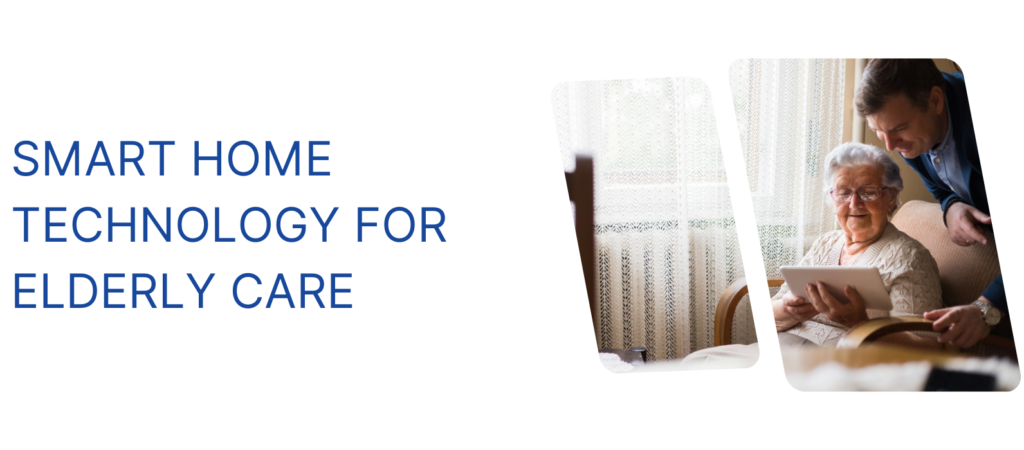
Legal Checklist for Arranging Elder Care (UK)
Introduction When an elderly loved one needs extra help, families often face a critical choice: should we opt for live-in

One advantage of caring for an older adult at home is the ability to modify the environment to meet their needs. Today, there are many assistive technologies and home adaptations available that can drastically improve safety and make daily life easier for seniors. From smart devices like fall sensors and medication reminders to practical modifications like grab rails and stairlifts, these tools help older people remain independent and secure in their own homes.
In this article, we’ll explore various types of technology and adaptations for elder care. We’ll cover simple changes you can make (often at low or no cost) as well as advanced gadgets that can support both the person receiving care and the family caregivers. Importantly, we’ll also note how to obtain some of these through UK local councils or
NHS services.
Before investing in gadgets, it’s wise to do a thorough home safety assessment. Walk through the home and identify hazards or challenges for your loved one. Common issues include tripping hazards, poor lighting, hard-to-access bathrooms, or difficulty using stairs. You can request a free home assessment from your local council’s adult social care team – an occupational therapist can visit and recommend adaptations, often funded by the council . They might suggest installing adaptive equipment or minor modifications to improve safety.
Some recommendations might be small adaptations that significantly reduce risk. For example, adding grab rails in the bathroom and by steps, securing or removing loose rugs, and improving lighting. In fact, the home is the most common place for accidents – about 2.7 million older people in the UK require a hospital visit each year due to an accident at home , often from falls. So addressing fall hazards is paramount. Simple fixes include:
Many minor home adaptations under £1,000 are provided for free by councils in England . This includes things like grab rails, short ramps for doorways, or lever taps that are easier on arthritic hands. Don’t hesitate to ask the council or an occupational therapist about these – if it prevents a fall or injury, it’s well worth it.
For those with mobility challenges, there are numerous aids that can be fitted in the home:
For any significant adaptations like stairlifts or wet room conversions, check if your loved one qualifies for a Disabled Facilities Grant (DFG). In the UK, a DFG is a council grant (means-tested in England) that can fund necessary home adaptations for disability up to £30,000. It covers modifications to improve safety and accessibility , such as those mentioned above. The occupational therapist who does the assessment can often help start the DFG process if relevant.

Modern technology offers some fantastic solutions to help monitor and assist seniors at home:
When choosing technology for an elderly person, always consider simplicity and training. A gadget is only useful if the person can and will use it correctly. Here are a few tips:
It can also help to involve the elderly person in choosing the device style or features so they feel some ownership and less like it’s being imposed on them. Emphasize how these tools make their life easier and safer (rather than suggesting they are incapable – it’s about convenience and independence).
Not all helpful devices are high-tech. Some very simple tools can enhance safety and comfort:
Many of these items can be found online or through mobility shops. The NHS and charities like Age UK also provide equipment loan services for items like walkers, wheelchairs, commodes, etc. Don’t hesitate to ask a GP or social worker about what’s available – in many cases equipment can be delivered and demonstrated at home.
Incorporating technology and home adaptations can dramatically improve the success of home care. By making the home environment supportive, you reduce the strain on both the elderly person and their caregivers. Falls can be prevented, medication adherence improved, and emergencies detected quickly – all through clever use of modifications and devices.
Remember, even small changes (like a grab rail or brighter light bulbs) can have a big impact on safety. And for more high-tech solutions, ensure they are set up correctly and that your loved one is comfortable using them. When done right, these enhancements allow seniors to live more independently and give families greater peace of mind.
For more guidance, check out our Assistive Technology for Elderly Care Guide which provides a step-by-step approach to selecting the right devices for your situation. And as always, Prime Eldercare can advise on and even help install certain adaptations. We want your loved one’s home to be not just where they live, but where they can thrive safely in their golden years.

Introduction When an elderly loved one needs extra help, families often face a critical choice: should we opt for live-in

Introduction Choosing between keeping your loved one at home with care support or moving them into a care home is

Introduction Figuring out how to pay for an elderly loved one’s care can be one of the most stressful parts